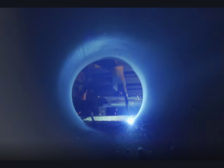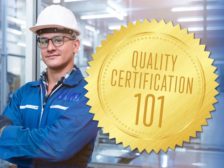Home » certification
Articles Tagged with ''certification''
Speaking of Quality | Jim Spichiger
Accomplishments Build on One Another
Professional credentials led me to push myself further.
April 18, 2023
NDT | Training
Nondestructive Testing Training
There are many topics related to NDT training that might be confusing for anyone hoping to work in this field.
April 13, 2023
Speaking of Quality | Duke Okes
The Multidimensionality of Quality
Quality offers endless opportunities to learn and contribute to the success of the organization and its employees, customers and suppliers.
December 20, 2022
Management
Why Quality Certifications Matter
Accreditation is critical to ensuring there is an effective quality management system that affords greater process control, reduces risk, and ulitmately results in increased customer satisfaction. And, thanks to the pandemic, it got a little easier.
August 8, 2022
NDT | Certification
Certification Records for Nondestructive Testing (NDT) Personnel
Before an individual can become certified in an NDT method, a number of prerequisites must be fulfilled.
August 8, 2022
Aerospace | Back 2 Basics
Aerospace Quality Management System (AQMS) Certification
If you really want a QMS to work, you need to work at it.
July 8, 2022
NDT | Certification
Nondestructive Testing Certification Programs Today
The need to formalize the qualification of NDT practitioners gradually became apparent.
October 15, 2021
Quality 101
Quality Certification 101: Background, Process and Benefits
Quality certification is for professionals who know the chosen specialty so well that they can apply the knowledge with known results.
August 1, 2021
Certification Integrity
Professional certifications demonstrate expertise.
September 28, 2020
Stay in the know with Quality’s comprehensive coverage of
the manufacturing and metrology industries.
eNewsletter | Website | eMagazine
JOIN TODAY!Copyright ©2024. All Rights Reserved BNP Media.
Design, CMS, Hosting & Web Development :: ePublishing












